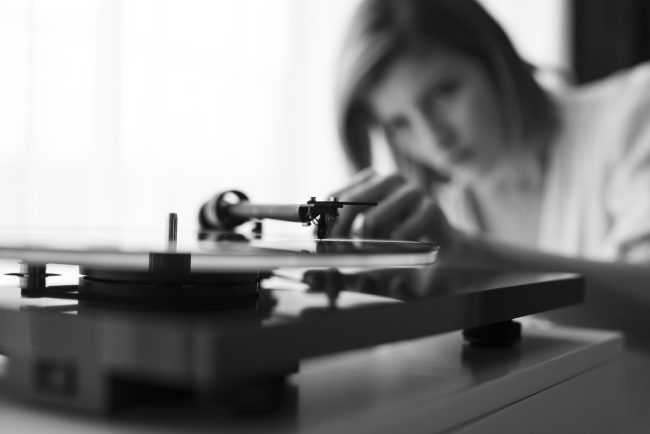
Vinyl Revival: Which turntable should you buy?
Vinyl is back!
People have been saying it for a while now, but evidence last year was stronger than ever, with sales of vinyl outpacing CDs for the first time since 1987. And in April 2023 sales soared by 122 % thanks to Record Store Day.
We’ve certainly noticed an increase in the sales of turntables here at Moss of Bath.
The variety of vinyl-spinning hardware on the market now is immense compared to a few years ago so which turntable should you buy?
Our advice would be to steer clear of the cheap, retro-styled record players. They may look chic, but they really won’t do your records justice and could even damage them in the long term. That doesn’t mean you need to spend a fortune to get started, though.
Take a look at some of the turntables we sell at Moss of Bath from Pro-Ject Audio Systems whose T1 Plug and Play turntable starts at £299.
Pro-Ject is a must see brand for anyone interested in good quality hi-fi, their recent collaboration with chart topping Metallica produced this stunning limited edition turntable which includes a mirror-finished metal logo…one for superfans!
And if you’re a real enthusiast who wants to splash out, then the iconic Technics SL-1200GR Direct Drive turntable always gets great industry reviews.
In the meantime here is a ‘jargon buster’ for you so that when you call in-store to take a look at the turntables you can impress our sales team with your knowledge!
Stylus – The needle. It’s usually tipped with a tiny diamond, but that diamond can be shaped in various ways. More exotic, costlier shapes track better around the record grooves, increasing the detail retrieved and reducing wear. This is the most delicate point on the turntable, so keep it away from prying fingers.
Cartridge – This is the little box that houses the stylus and the magnets, which produce the audio signal that’s sent back to your amplification. There are two main types of cartridge: moving magnet (MM) and moving coil (MC). The latter tends to offer better sound quality, but costs more and requires greater care with setup to get the best from it.
Tonearm – This is the wand that the cartridge is attached to, pivoting around to enable the stylus to track across the record. Tonearms come in a few different shapes, sizes, weights and pivoting styles. It’s vital that your cartridge has decent synergy with your tonearm. Some cheap turntables put too much pressure on the record, which will absolutely wreck your collection.
Platter – The round area upon which your record sits and spins, held in place by the spindle. These can be made of metal, resin, glass, acrylic, ceramic or vinyl-coated MDF, and often come with a rubber or wool mat.
Belt drive/Direct drive – Most modern hi-fi turntables are belt-driven, with a rubber band running around the motor pulley and the platter or sub-platter. This approach helps to stop vibrations from the motor being picked up by the stylus. With direct drive the motor is connected to the spindle, right under the platter, and has the advantage of ensuring more consistent rotational speed.
Phono stage/pre-amp – The audio signal that comes direct from the cartridge is very faint, so a phono pre-amp is required to amplify that signal before sending it to a line input. Cheaper standalone phono stages will often only work with MM cartridges, while more expensive MC-compatible models can offer a bewildering number of options for perfectly matching with a particular cartridge. Plug-and-play turntables have a phono pre-amp built in.
We love it when customers bring in their favourite vinyl records to audition a brand new turntable.
